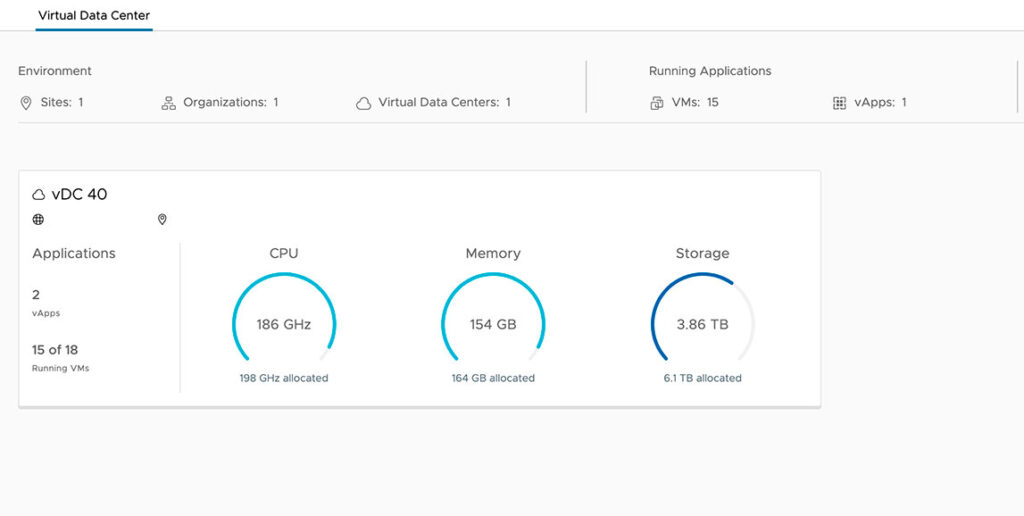Virtual Data Center on VMware Cloud Director Platform
A virtual data center (vDC) on the VMware Cloud Director platform is a powerful tool for managing isolated computing resources for various users or organizations within a cloud infrastructure. In this article, we’ll explore what a virtual data center on VMware Cloud Director is and the benefits it provides.

Key Components of a Virtual Data Center
- Organization Virtual Data Center (Org vDC) An Org vDC represents dedicated computing resources (CPU, memory, storage) allocated to a specific organization or business unit. It enables:
- Configuring resource allocation levels such as reservations, limits, and shares.
- Managing application performance and workload.
- Organize and segment resources based on the needs of different teams or projects.
- Ensure optimal resource distribution for all users.
- Resource Pools Resource pools consist of computing power, such as CPU and memory, that can be allocated among different virtual machines within a vDC. They help:
- Organize and segment resources based on the needs of different teams or projects.
- Guarantee optimal resource allocation for all users.
- Catalogs Catalogs are used to store and manage virtual machine templates, ISO images, and other resources required for environment deployment. They can be:
- Public, available to all users.
- Private, accessible only to specific users or teams.
- Virtual Machines (VMs) Virtual machines within a vDC can be created from templates or deployed from scratch. Key benefits include:
- Fast cloning and scaling of virtual machines.
- Flexible resource configuration for specific tasks.
- Networking Resources Networking resources include virtual networks (vApp Networks, Routed Networks), firewalls, VPN, NAT, and other network functions, providing:
- Creation of flexible and secure network architectures.
- Ensuring data isolation and security.
- Storage The platform supports the use of various storage types, such as:
- Standard vSphere datastores.
- Integration with object storage for handling large volumes of data.
Advantages of Using a Virtual Data Center on VMware Cloud Director
- Isolation and Security Each organization has its isolated resources and networks, ensuring:
- A high level of data security.
- User access and rights management.
- Flexibility and Scalability The platform allows:
- Quick resource scaling to meet current business needs.
- Creating and cloning environments for development and testing.
- Automation and Orchestration VMware Cloud Director offers powerful automation tools for:
- Creating and managing virtual data centers.
- Reducing administrative costs.
- Application Lifecycle Management (ALM) Automating the processes of creating, updating, and deleting virtual machines and environments allows:
- Simplifying application lifecycle management.
- Quickly testing and implementing changes.
Use Cases of Virtual Data Centers
- Multi-Tenant Environments: Cloud services for service providers offering isolated resources to their customers.
- Testing and Development: Rapid creation of environments identical to production for testing new features or bug fixes.
- Hybrid Cloud: Integration with public clouds, such as VMware Cloud on AWS, for creating hybrid cloud solutions.
Conclusion
VMware Cloud Director provides powerful tools for managing virtual data centers, making it an ideal choice for companies looking to enhance the flexibility and efficiency of their IT infrastructure. Utilizing vDCs enables organizations to quickly adapt to changing business needs while ensuring a high level of security and manageability.
